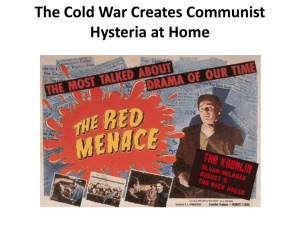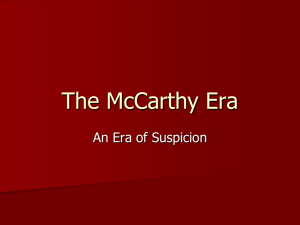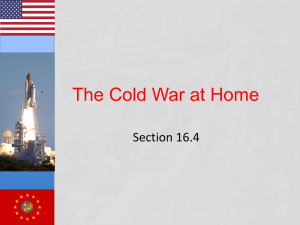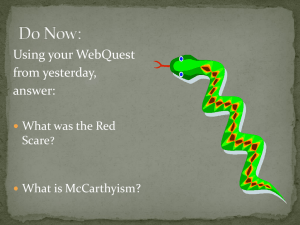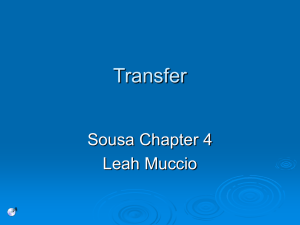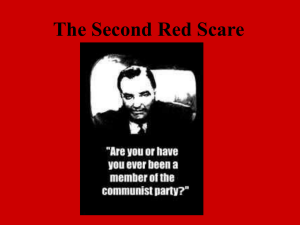The Norwegian Rat - English II with Mr. Davis
advertisement
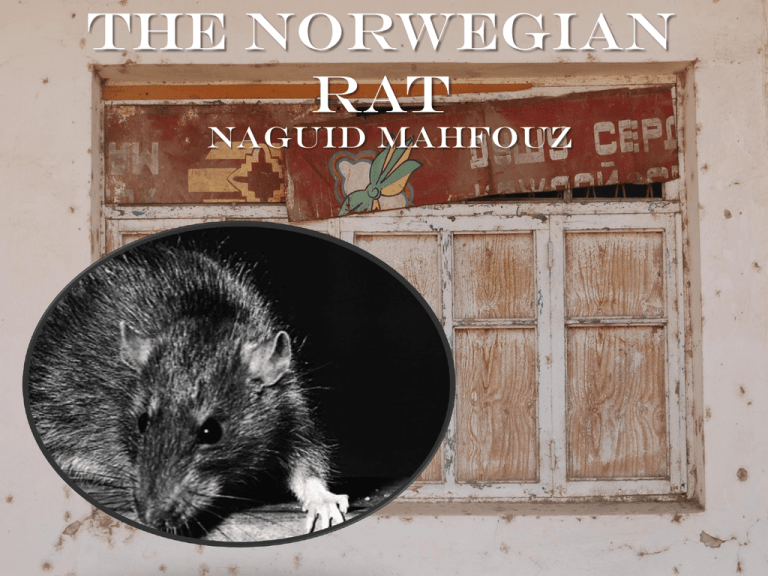
The Norwegian Rat Naguid Mahfouz Naguib Mahfouz (1911-2006) •Grew up in Egypt •First Arab to win a Nobel Peace Prize •Grew up in a middle class family, attended the University of Cairo, and became a writer •Made short stories and novels a more popular genre in the Middle East, where poetry is more traditionally published •Writing deals with social and political themes Key Concepts: • Hysteria • Mood • Magical Realism • Ambiguity Hysteria 1) Exaggerated or uncontrollable emotion or excitement, especially among a group of people. 2) A psychological disorder whose symptoms include conversion of mental stress into physical symptoms such as volatile emotions, physical illness, unrest, and/or hallucinations Salem Witch Trials • In June of 1692, a special court sat in Salem, MA to hear cases of witchcraft. Thirteen women and five men from all stations of life went to the gallows • Historians believe such a witch hunt was caused by multiple influences: sickness in the community, resentment of economic prosperity, strict religious zeal, as well as intense social magnification. Mumbai “Sweet” Water • The 2006 Mumbai “sweet” seawater incident was a phenomenon during which residents of Mumbai, India claimed that the water at Mahim Creek, one of the most polluted creeks in India that receives thousands of tones of raw sewage and industrial waste every day, had suddenly turned “sweet”. • Within hours, the Pollution Control Board had warned people not to drink the water, but despite this many people had collected it in bottles, even as plastic and rubbish had drifted by on the current. By 2pm the following day, the devotees said that the water was salty again. June Bug Epidemic • In 1962 a mysterious disease broke out in a dressmaking department of a US textile factory. The symptoms included numbness, nausea, dizziness, and vomiting. Word of a bug in the factory that would bite its victims and develop the above symptoms quickly spread. Soon sixty two employees developed this mysterious illness, some of whom were hospitalized. • While the researchers believed some workers were bitten by the bug, anxiety was likely the cause of the symptoms. No evidence was ever found for a bug which could cause the above flu-like symptoms, nor did all workers demonstrate bites. The Norwegian Rat • While a work of fiction, The Norwegian Rat nonetheless depicts a subtle type of hysteria that people fall victim to— spreading rumors based up irrational fears created for them by their government. • As you read, you will work describing the mood and plot sequence of the text to try and decipher what Mahfouz is saying about hysteria. Mood Exercise Description MOOD: The atmosphere Mood/Feeling/Sense that pervades a literary Emphasized work with the intention of evoking a certain emotion or Example: The mood set is one of feeling from the audience. “Summer was our best season: it was sleeping care-free happiness and • In drama, may created by sets and Words music as andwell on the back screenedmood porch in cots,be or trying to excitement. as words; in poetry and prose, mood may be created by a sleep in the tree house; summer was everything phrases like “best,” combination of such elements as SETTING, TONE, and THEME. describing the season, good to eat; it was a thousand colors in a • The landscape; moods evoked the more “everything popular shortgood” stories andof parched but most of by all summer Edgar tend to be horrific, in gloomy, a parched was Dill.”Allen Poe, for example, “colors and desperate. landscape” create a sense of relaxed anticipation and better times to come. Mood Exercise Description Example: FORTUNATELY we were not alone in this affliction. Mr. A.M., being the senior householder in the building, had invited us to a meeting in his flat for an exchange of opinions. There were not more than ten people present, including Mr. A.M., who, in addition to being the oldest among us, held the most senior position and was also the most well off. No one failed to show up—and how could they, seeing that it had to do with the rats and their likely invasion of our homes and their threat to our safety? Mr. A.M. began in a voice of great gravity with “As you all know ...” and then set forth what the papers had been reiterating about the advance of the rats, their vast numbers, and the terrible destruction that would be wrought by them. Voices were raised around the room. Mood/Feeling/ Word Choice What are the characters feeling? What words lend to establishing that feeling? What are other adjectives you can use to describe this mood? Write them down in your next sentence. Claim: Evidence: Magical Realism: A literary style that combines incredible events with realistic details and relates them in a matter-of-fact tone. What aspects of our text fit this definition? Ambiguity: The expression of ideas in a text that suggests more than one meaning. What aspects of our text fit this definition? The Ending: “I found myself standing before a middle-aged, sturdily built man with a thick mustache, his square face with his short nose and glassy stare reminding me of a cat.” “All we glimpsed of him was his swaying back, then a swift about face as he bid us farewell with a fleeting Norwegian smile.” (pg 1036) McCarthyism In 1954the Period During Senator Although of McCarthy, athe political hearing late Senate 1940s meanwhile, onForeign persecution McCarthy's and early Relations sought during when 1950s, publicity Committee allegations theinvestigated to 1950s, Cold of revive suspected War led flagging tensions by McCarthy's US senator communists support were Joethe mounting, for allegations, in McCarthy, his US re-election. many Army it during Americans was didtelevised not which In uncover 1950, were many alarmed atany a public by Republican evidence nationally. the spread officials atwomen's all In of person of and communism meeting communists private his allegations both in citizens in the were hollow abroad Wheeling, Department rang accused andWest at of and of home. State. Virginia, being seemed Overseas, Nevertheless, communists brutal he claimed China and or communist became to McCarthy crude. knowHe communist the made sympathizers. was identities further and the accusations discredited of Although USSR 205 more State and McCarthy militarily Department began when the a nationwide was Senate aggressive; officials officially officially campaign with at censured home communist censured to hunt Soviet by the for spy links. down him Senate cases, communists Although misconduct. for misconduct such as those groundless, and communist The US against in Supreme his 1954 (most made Julius allegations sympathizers. Court of and his a Ethel provided evidence series Those Rosenberg, who of awas fearful decisions appeared caused US fabricated), great public before 1955–58 scandal. with congressional thatan his helped The explanation claims US to committees government protect induced for the an were atmosphere began spread confronted civil investigating rights of communism ofof with suspicion circumstantial people federal and accused and workers sparked paranoia of mass thatcreating and anti-communist evidence having destroyed communist and intimidation. lists many hysteria. links. of careers. organizations Many The term has come suspected people accused to ofsignify communist others any to activity. type saveof their reckless own careers. political Those who persecution tried toor witch-hunt. criticize the government's methods were labeled communist sympathizers. Theme & Purpose: The Norwegian Rat & McCarthyism Setting The Norwegian Rat McCarthyism Irrational Fear The Accuser What is Gained by the accuser? Response and Analysis Questions: (pg 1037) 1. How do the people prepare for the rat invasion? 2. Who inspects the narrator’s home? How do the narrator and his wife perceive this person at first? How does this perception change at the end of the story? 3. What sources of information about the rats do people in the story have access to? How reliable do you think these are? Explain. 4. What happens to people’s emotions as preparations continue but not rat attack has yet to occur? Is there psychological truth in this reaction? Do you know any examples? 5. What conclusions can you draw about the rat invasion based on the text? 6. Ambiguity is used in the final scene. How do you interpret it? Explain your opinion. 7. What does the government accomplish in the story through the rat invasion? What might Mahfouz be suggesting about government? Powerful institutions? The governed?
